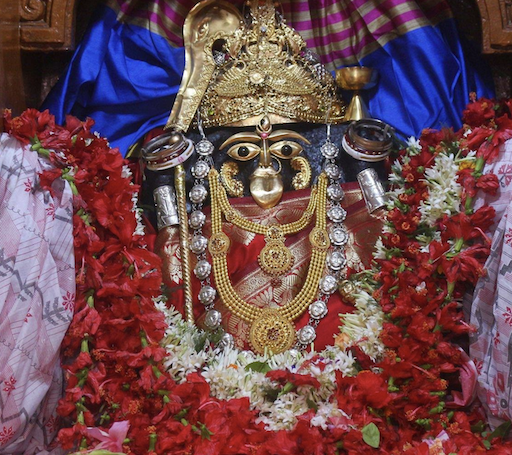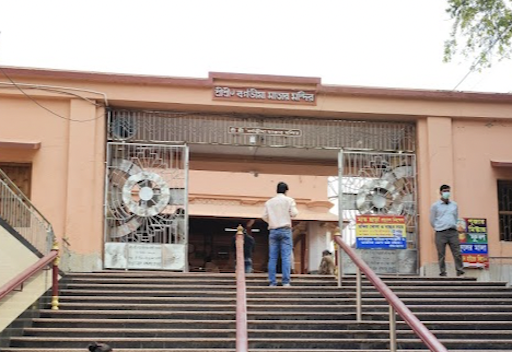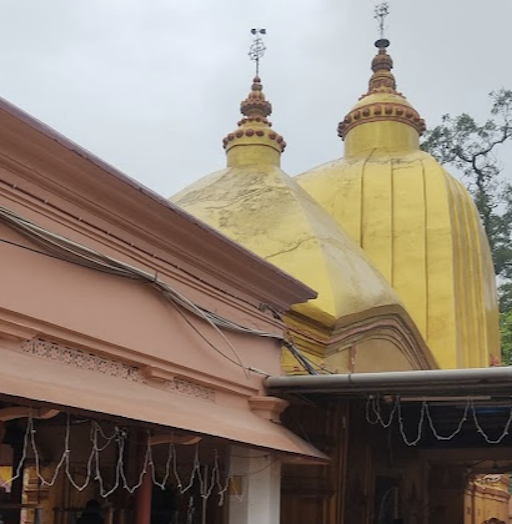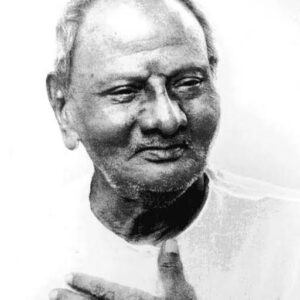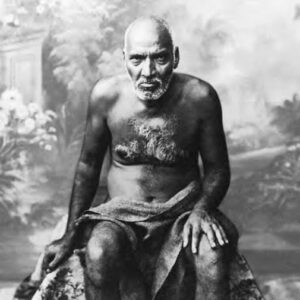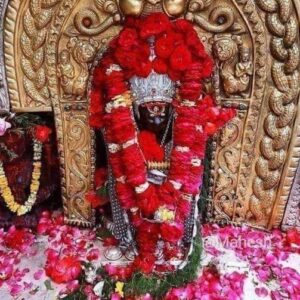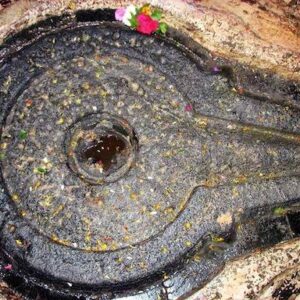This is a temple of Bagabhima shaktipeeth. This is also known as Kapalini and Vibhash Shakti Peeth.
There is a place to sit and meditate in the mandap in front of the deity. You can go into meditative states here effortlessly.
How to Get there
The temple is located 86 kms South West from Kolkata.
Map:
https://maps.app.goo.gl/ar5sJsnuMjdNwLVx7
Bargabhima temple was built nearly 1150 years ago by a Maharaja of the Mayor dynasty. This temple is also known as Vibhasha Shakti Peeth or Bhimakali Temple. This shrine lies on the bank of the River Rupnarayana at Tamluk village in East Midnapore district of West Bengal. This Temple has been mentioned in the Mahabharata as a place which Bhima acquired.
Puranas
According to ancient Hindu texts, Sati Behula came to the old port of Tamralipta presently known as Tamluk with the dead body of her husband, Lakhindar who lost his life in the ‘Basar-Ghar’ by the instructions of Devi Manasha on a floating bank(Mandas) made of banana-tree. Not only that but also after listening to the undignified slander of her husband at the palace of his father, ‘Daksharaj’, Devi Sati became angry and immolated herself. After that, being very angry Lord Shiva came there and he lifted Sati-Maa’s pious body on his shoulder and started ‘Tandab-Nritya.’ which would have destroyed the whole universe. In that moment of crisis, Lord Vishnu tried to outface Lord Shiva by dividing Maa-Sati’s holy and sinless body with his ‘Sudarshan Chakra’, keeping himself hidden. With the help of ‘Sudarshan-Chakra, Sati-Maa’s pious 51 Peeths were formed. At Tamluk, the ankle of her left leg of Devi mother was dropped and formed a Shakti-Peeth. The name of that said Peeth is called ‘Vibhasha.’ Devi Maa of this Peeth is Goddess Bhimpura, originally known as ‘Bargabhima.’
In the era of Mahabharata, Narapati ‘Tamraj or Tamradhwaj’ was ruling that time. That time, a fisherwoman was providing fishes to King Tamradhwaj daily. So, she had to cross a long road throughout a dense jungle every day. And for that, she had to sink her fishes once in the water of a ‘Kunda’, as if the fishes did not die. After doing that, the fishes immediately survived if any fish was all ready to die. One day, with great curiosity, the king asked the fisherwoman about the mystery and then she explained to him. After hearing her, the king went to see that kunda and he decided to construct a temple there for the goddess.
The kunda beside the Bargabhima mother’s temple is now adjacent to the north side of the temple. This kunda is not the previous one where the fisherwoman became able to revive her almost dead fishes alive.
The Temple
Bargabhima Temple is stretched over the vast area with a courtyard. Inside the inner temple, the Blackstone idol of Goddess Kali is stood beside the Shiva Linga and is surrounded by white marble boundary. The ruling deity of this temple is Goddess Kali who is worshipped as an icon of the Goddess Mahisasur-Mardini, the destroyer of demons. The divinity has four arms. Upper two arms are holding a Trident and a human skull and in lower two arms she carries the heads of the demons after slaying them. The architecture of the temple resembles that of Kalinga temple tombs, as well as Bangla Aatchala, styled Natmandir. This temple is the mixture of Hindu, Oriya and Buddhist culture. The old construction of this temple was destroyed during the Islamic invasion and the present one is built on the remnants of the primitive temple. This temple is 60′ high. There is a pond near the temple and it has a flight of stairs and it is very old. It is very clean and well maintained. No PANDA-TROUBLE like other places. There is a Car Parking facility of its own just inside the opposite lane. Civic Police or Green Police are extremely friendly.
To pay the tribute to the Almighty, the mind should be centralised to the Lord. Worship with such an orientation would have a very good effect on us. Bargabhima temple opens at 4 a.m. and closes at 7 p.m. In the afternoon, the temple closes its door for 30 minutes for bhog. Tourists and devotees should have their bath before leaving home if they wish to pay their ‘PUSHPANJALI’ otherwise they will not be allowed to enter the ‘Garbha- Griha.’
This temple has an option of offering ‘Bhog’ which are cooked by the priests of that respective temple and can be taken there. The special item of the ‘Bhog’ is Shol machcher(Shol fish) amer tak(mango tarter). Tourists and devotees may have this ‘Bhog’ for Rs 70.
Barunir Fair is celebrated during Makara Shankranti and Bhima Fair is celebrated on Magha Shuddha Ekadashi. Ratha Jatra is celebrated in the Bengali month of Ashar. Charak Fair is also celebrated. The other important festivals are Sharad Purnima, Deepawali, Somvati Amavasya, Ram Navami and Navaratri.
